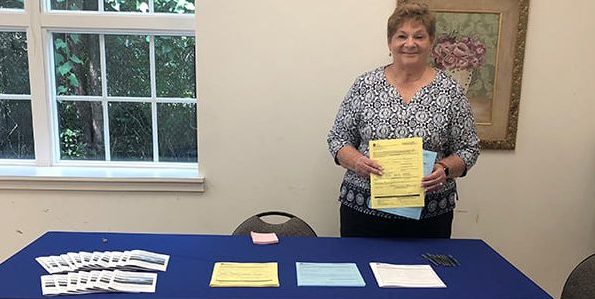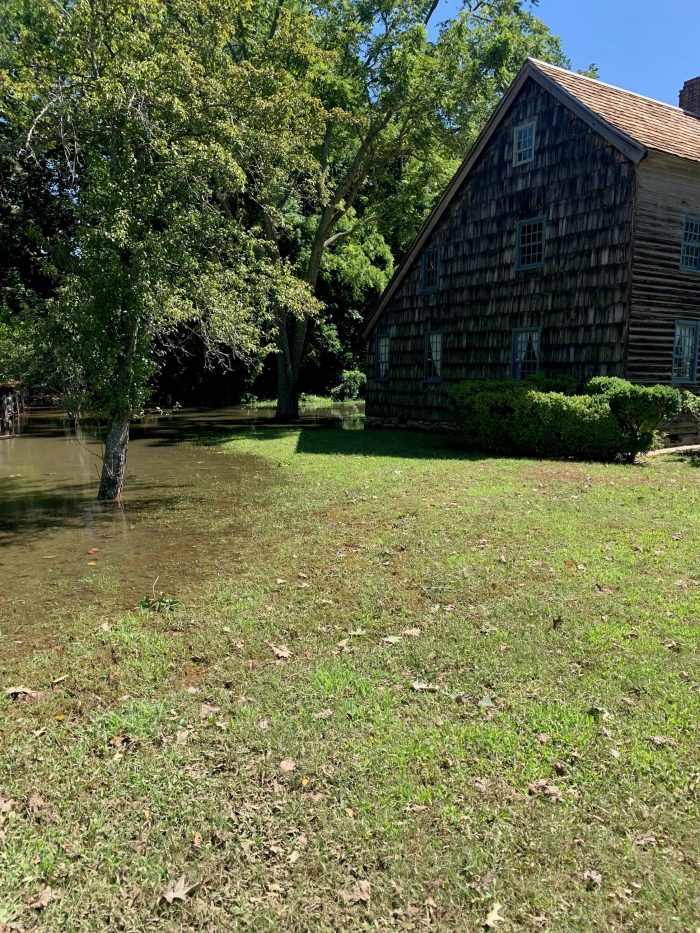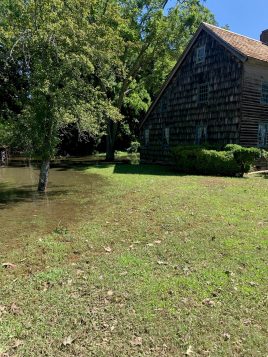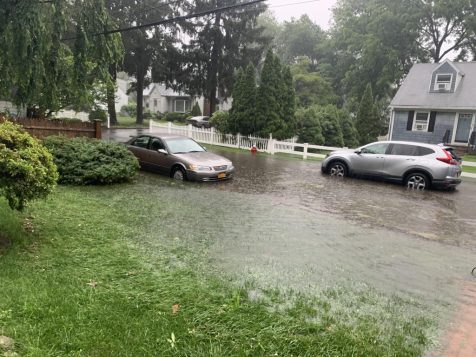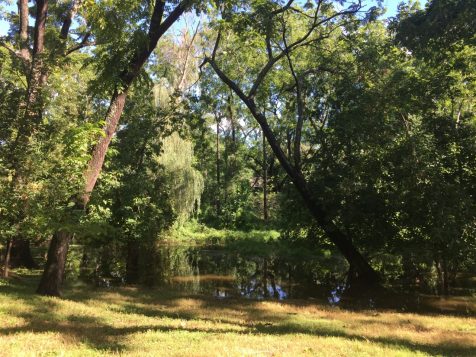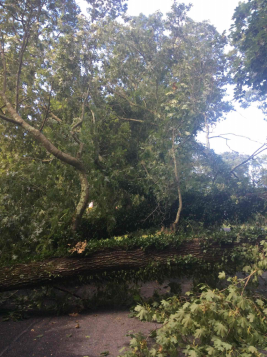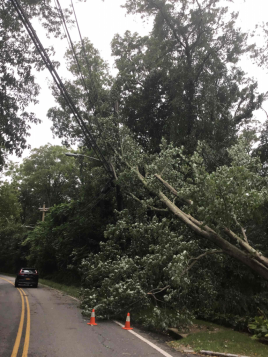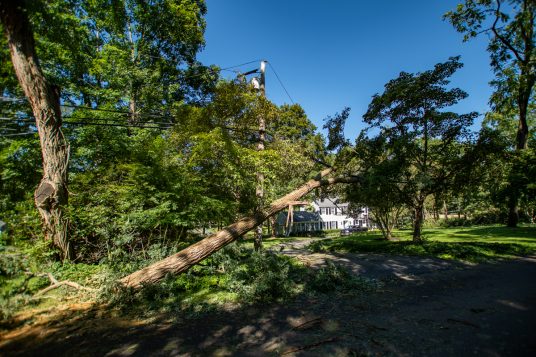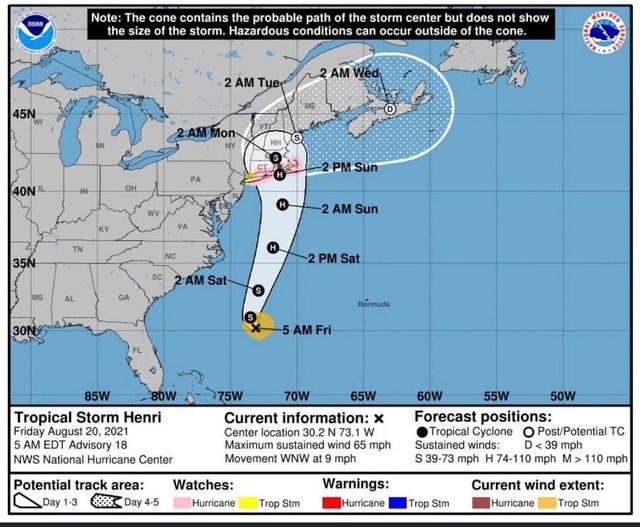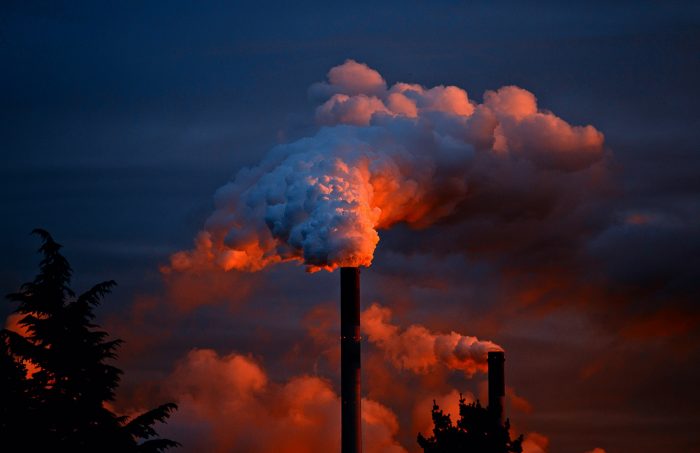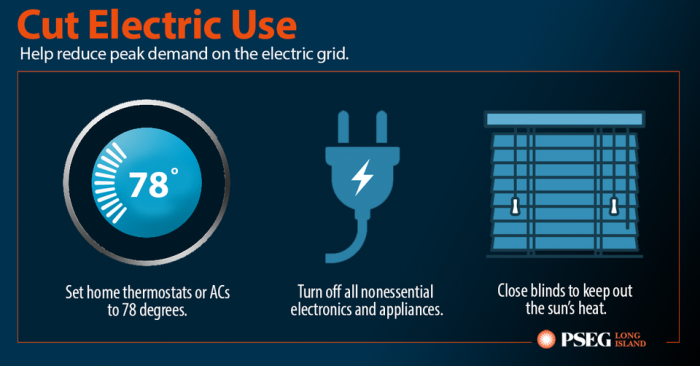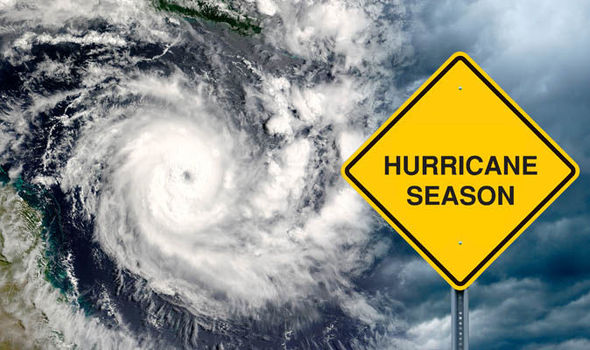Many North Shore residents spent their Thursday cleaning up after remnants of Tropical Depression Ida pummeled the Island Wednesday night. In addition to the storm, the National Weather Service issued a tornado warning for the North Shore of Suffolk County.
According to PSEG Long Island, the hardest-hit areas on the Island include Northport, Ridge, Lloyd Harbor and Huntington.
Huntington
In the Town of Huntington, flooding outside of the Huntington Sewage Treatment Plant on Creek Road left several motorists stranded, according to a press release from the town. STP staff accessed the facility via payloader late in the evening on Sept.1. During the peak of high tide, STP staff were unable to access the plant from the main entrance on Creek Road or from the rear entrance near the Mill Dam gates.
“We actually had to take a payloader out to the Creek Road entrance to bring one of our employees into the plant last night,” said John Clark, the town’s director of Environmental Waste Management. “Several cars, including a police vehicle, were stuck on Creek Road and New York Avenue — at least one driver (a police officer) had to be removed via boat by the Huntington Fire Department.”
Steve Jappell, a wastewater treatment plant operator at the STP facility, operated the payloader and assisted fellow employee Joe Lombardo and the police officer, who was ultimately transported from the scene by the Huntington Fire Department in a rescue boat.
“Thank you to the Huntington Fire Department, as well as Centerport, Halesite and Northport fire departments, who also arrived to assist other stranded motorists on Creek Road, and to our quick-thinking staff at the plant,” said town Supervisor Chad Lupinacci (R).
According to the press release, the area received its largest rain event in nearly 20 years between 7 p.m. and 1:30 a.m. The town reported that 6.29 inches fell during the 6 ½ hours.
While the STP usually processes around 1.8 million gallons per day, between 6 a.m. Sept. 1 and 6 a.m. Sept. 2 it processed more than 3.8 million gallons. According to the town, the plane “will continue to experience above average flow rates over the next two days as groundwater intrusion and sump pump activity contribute to the increased volumes.”
Town officials also said there were 26 reports of flooding mostly in Huntington; 29 reports of downed trees and branches; 16 reports of large pieces, sections and layers of asphalt ripped away, five manhole covers washed aside and one possible sinkhole was reported in Northport as asphalt washed away on Oleander Drive.
As for town facilities both golf courses had some flooding and were closed Sept. 2, and Town Hall had about ½ inch of flooding in the basement.
Smithtown
According to Smithtown Public Information Officer Nicole Gargiulo, there was flooding in the Smithtown Town Hall basement; however, there was no other damage to equipment or facilities in the town.
During the peak of the storm, the town received calls about flooded roads, but the streets were cleared as of the morning of Sept. 2.
Callahan’s Beach sustained damage, according to Gargiulo. The beach had already been closed due to damage after a storm in the early morning hours of Aug. 27.
Stony Brook University
Students in the Mendelsohn Community of Stony Brook University, which is located on the North end of campus off of Stadium Drive, were the SBU students most affected by the storm. According to communications sent out by the university, while other areas of the campus experienced flooding conditions, Mendelsohn was the most affected and students needed to be relocated.
Also affected by the storm was the Student Brook Union, and the building is closed for damage assessment and cleanup. The university held a ribbon cutting ceremony for the newly renovated student union building last week. Employees who work in the building were asked to work remotely Sept. 2.
In an email from Rick Gatteau, vice president for Students Affairs, and Catherine-Mary Rivera, assistant vice president for Campus Residences, “the Mendelsohn buildings have no power due to 4-6 feet of water in the basement, resulting in a power failure to the building. At this time, it is unsafe to be in the building while our teams pump out the water, assess the damage, and determine the timeline for repairs.”
Mendelsohn residents were not required to attend class on Sept. 2.
Three Village
During the storm, the historic Thompson House in East Setauket took in 33 inches of water in its basement. Some of the water rose up to the first floor of the 1709 structure.
The building, which belongs to the Ward Melville Heritage Organization, will need to have the water pumped out, according to WMHO President Gloria Rocchio. After the water is pumped out, a cleanup company will have more work ahead of them to prevent any more damage.
According to the National Weather Service, 6.86 inches of rain fell in Setauket. The NWS reported that it was the highest rainfall total on Long Island.
Additional reporting by Daniel Dunaief.



